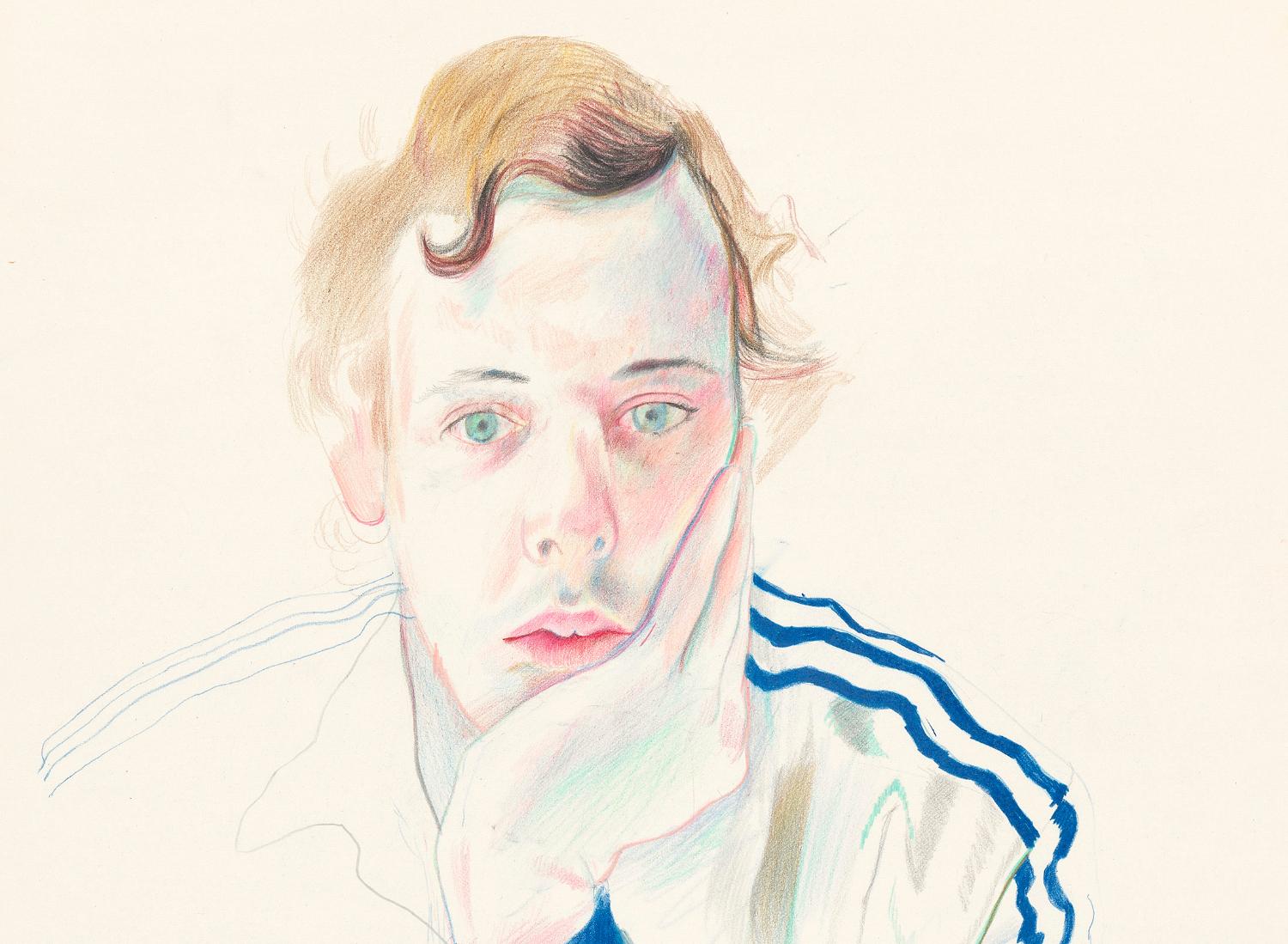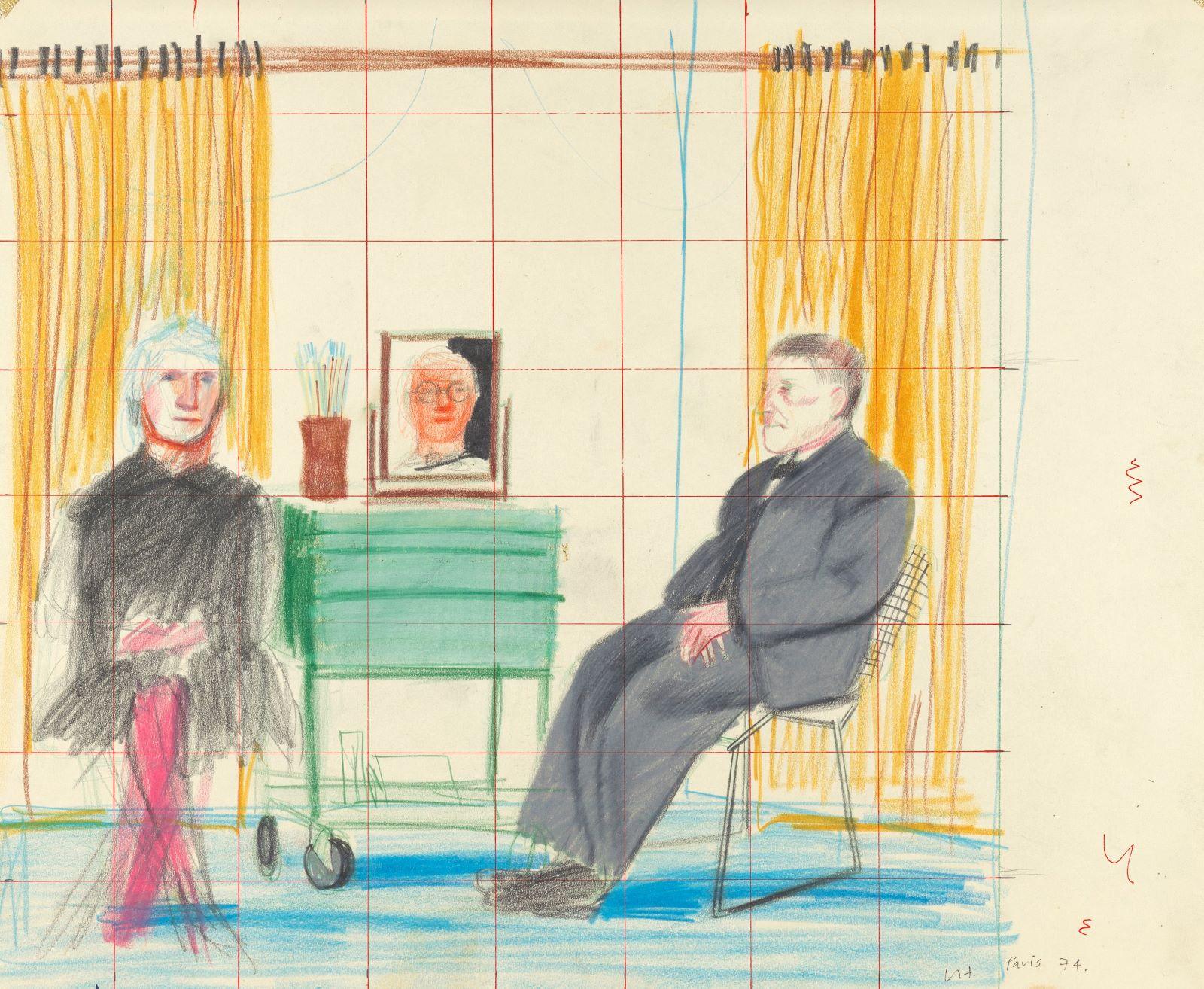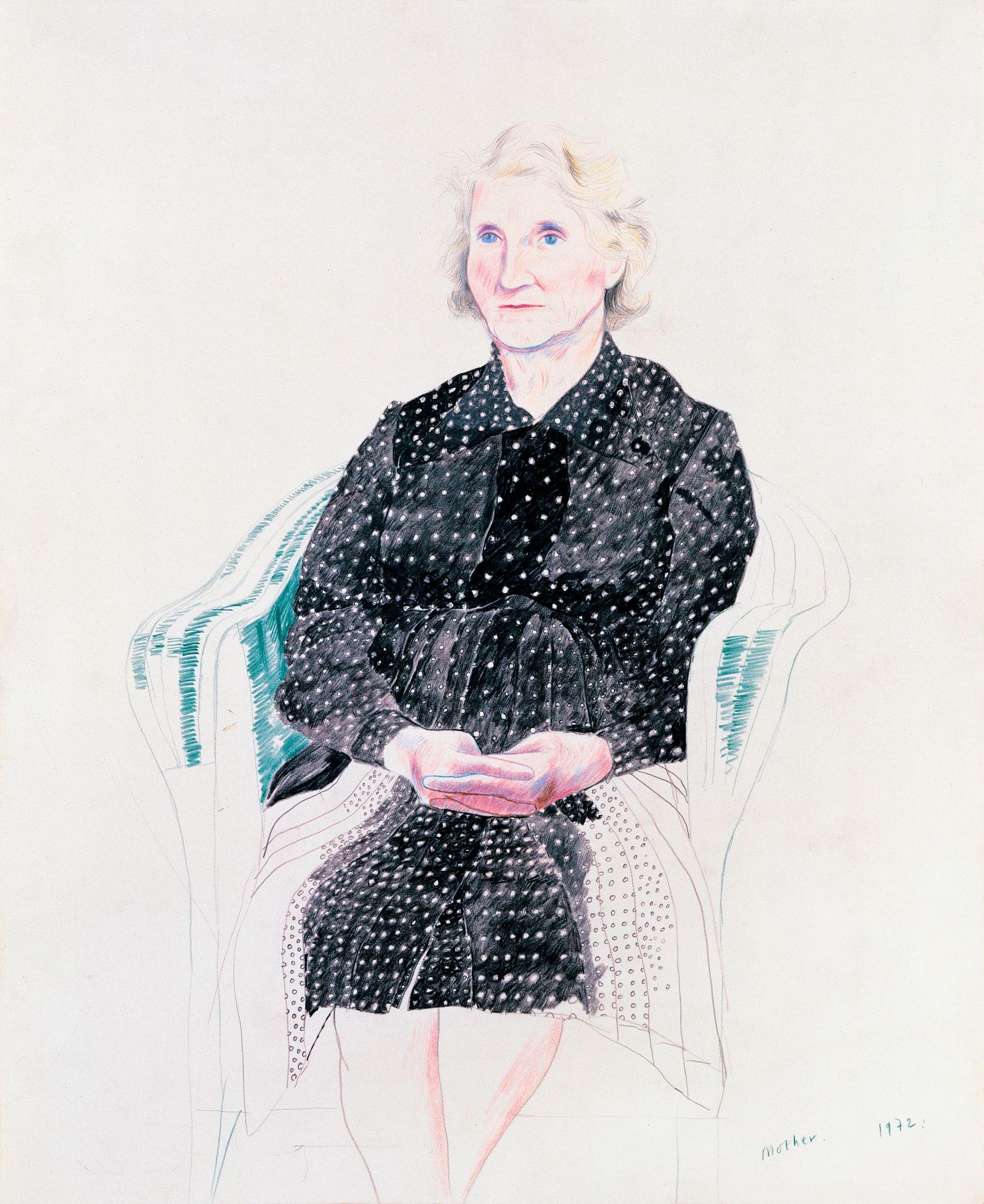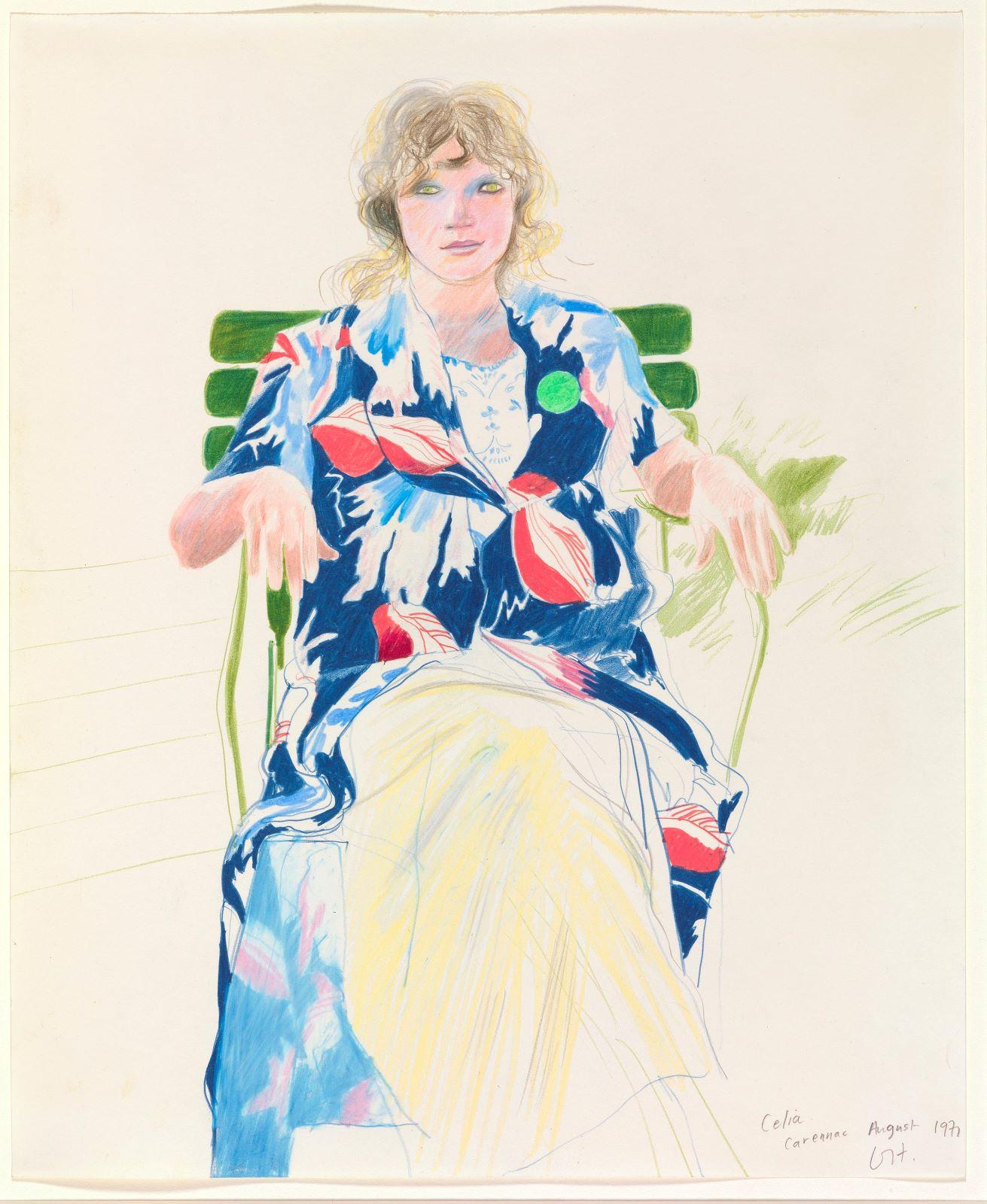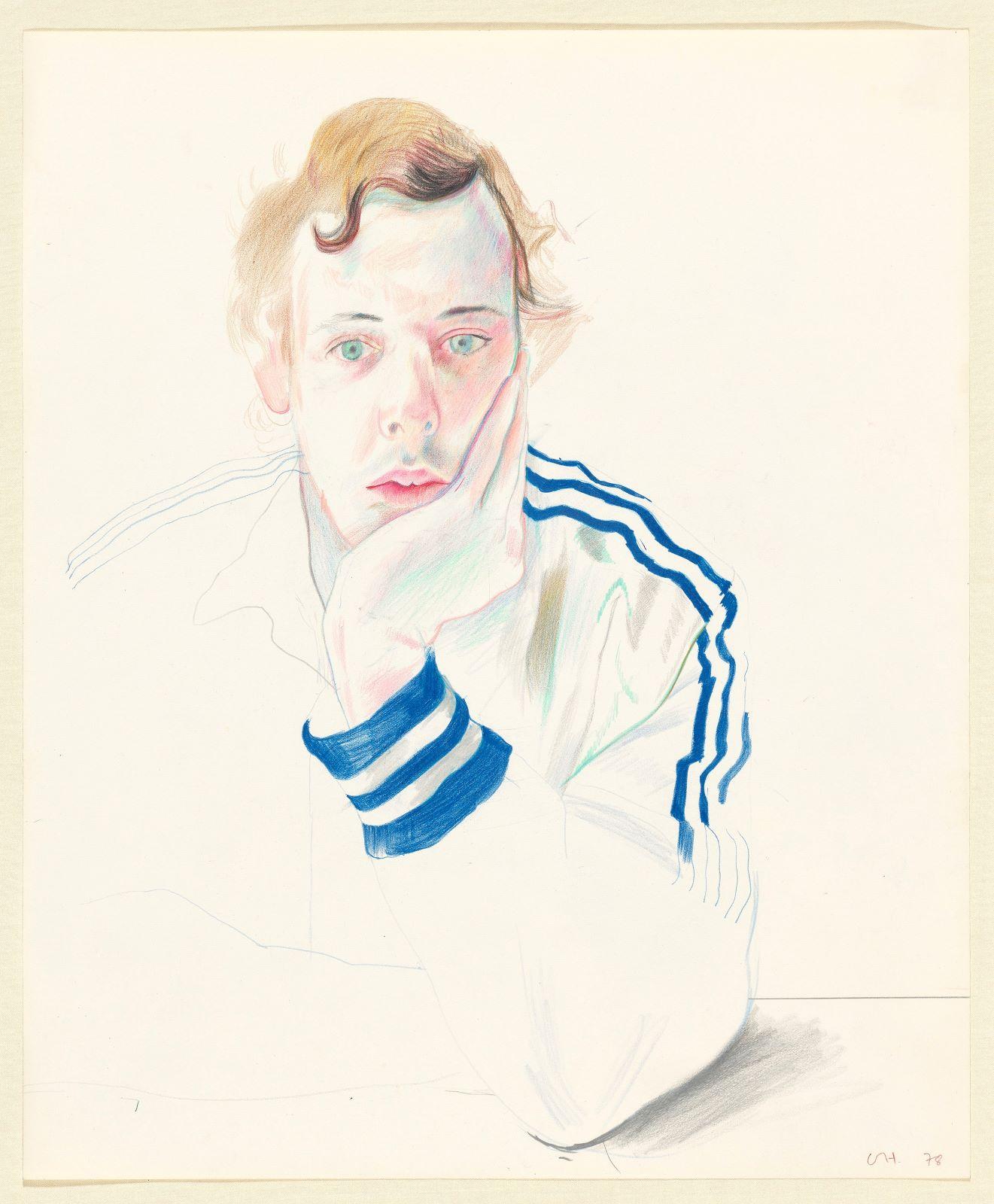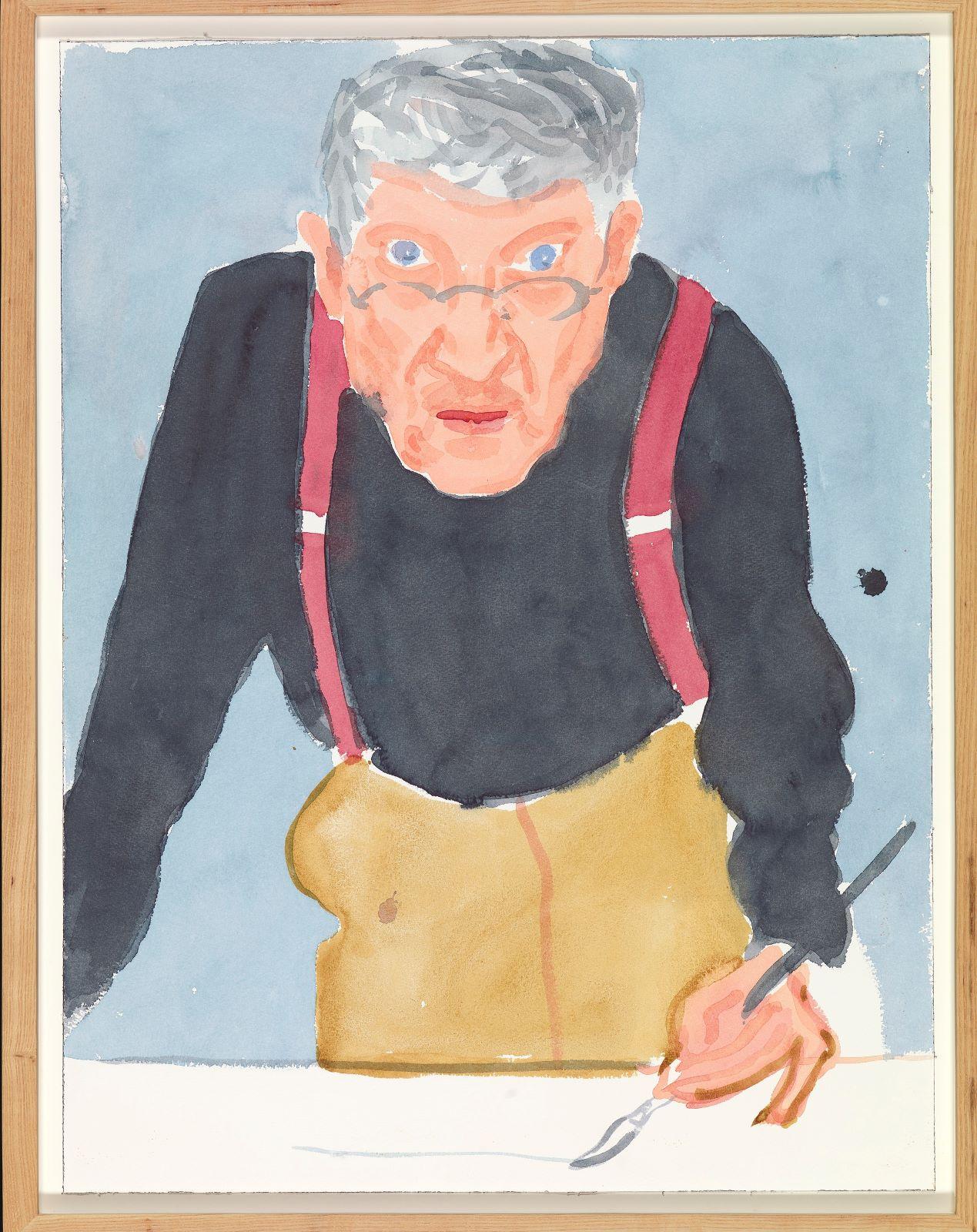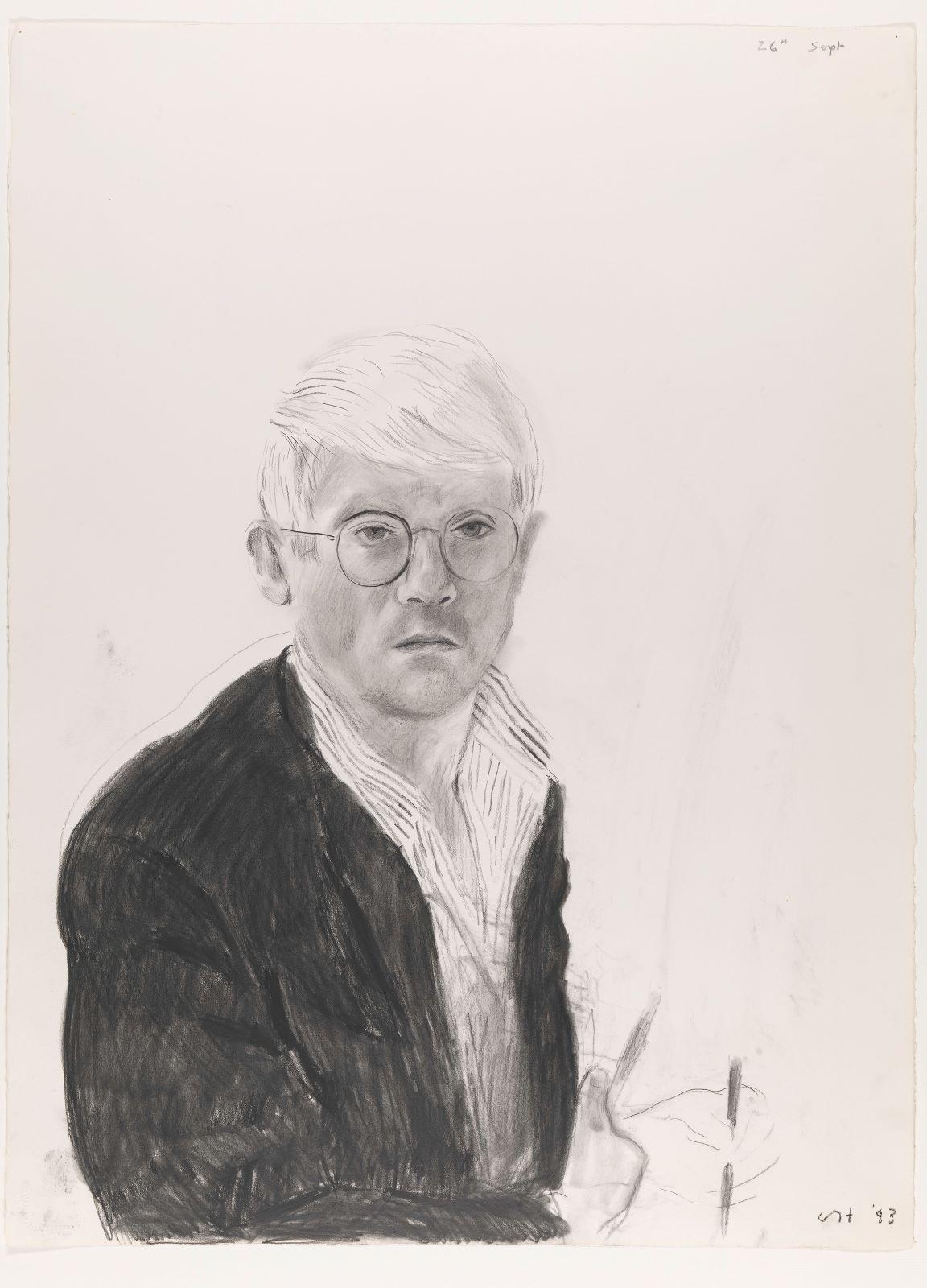Hockney has had approximately 1,000 solo and group exhibitions during the course of his career. When Sarah Howgate, the Senior Curator of Contemporary Collections at the National Portrait Gallery in London approached him about doing a drawing show focusing on the small group of family and friends that had sat patiently as subjects for him for years, it was not surprising when he replied, “well, I’m a bit exhibitioned out, but I do think it would be fascinating to see,” Hockney admitted. “There aren’t many artists who’ve been drawing the same people for over sixty years.”
David Hockney: Drawing from Life, now on view at the Morgan Library and Museum, takes a focused look at drawings of the four most significant people in his life: his mother Laura, textile designer Celia Birtwell, his curator and advisor Gregory Evans, and printmaker Maurice Payne. Alongside them, we see the parallel examination of Hockney's own passage through time in self-portraits.




